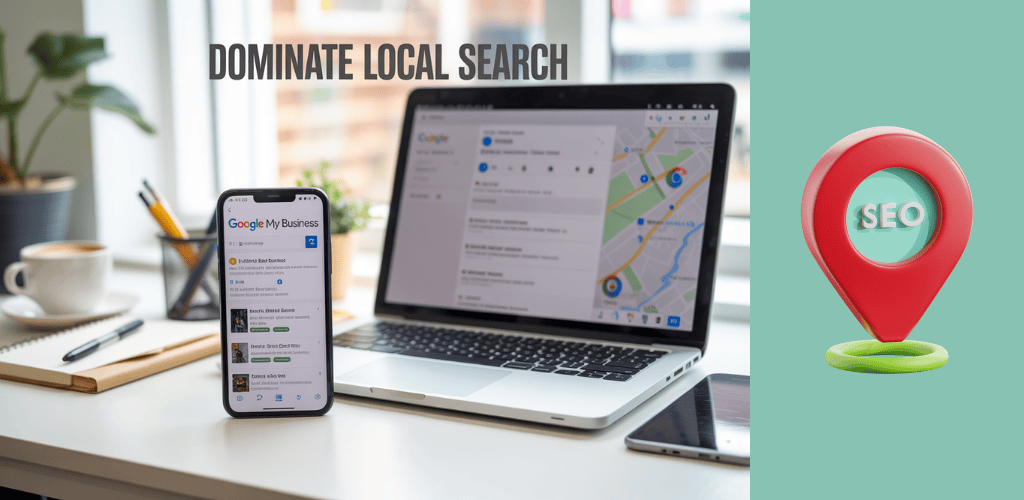In today’s digital age, your online store’s success hinges on one crucial factor: user experience. Did you know that a staggering 88% of online shoppers are less likely to return after a negative experience? That’s right – the way your customers interact with your website can make or break your business.
Are you struggling to keep up with the ever-rising expectations of online shoppers? You’re not alone. From slow-loading pages to confusing navigation, many ecommerce sites fall short of providing a seamless shopping journey. But here’s the good news: by implementing the right Online Store Features, you can transform your online store into a customer magnet.
In this post, we’ll dive into the best online store features to improve user experience. You’ll discover how to prioritize user-friendly design, enhance product discovery, and streamline the checkout process. We’ll also explore personalization strategies, ways to build trust and credibility, and tips for providing excellent customer support. Get ready to take your online store to the next level and leave your competitors in the dust!
Table of Contents
Prioritize User-Friendly Design in Online Store Features
A. Optimize for mobile shopping
In today’s digital landscape, optimizing your online store for mobile shopping is crucial. You need to ensure that your e-commerce site provides a seamless experience across all devices, especially smartphones. Here’s why it’s essential:
- First impressions matter: Users form opinions about your site within milliseconds
- Mobile traffic dominates: A significant portion of online shoppers use mobile devices
- Conversion potential: Well-optimized mobile sites can lead to higher sales
B. Mobile-specific features
To enhance your mobile shopping experience, consider implementing these Online Store Features:
- Predictive search
- One-click purchasing
- Mobile-friendly product filters
- Easy-to-use size guides
- Swipe gestures for product navigation
C. Touch-friendly elements
Make your Online Store Features easy to navigate with touch-friendly elements:
| Element | Design Consideration |
|---|---|
| Buttons | Large, well-spaced |
| Menus | Easily tappable |
| Forms | Simplified for mobile |
| Sliders | Smooth, responsive |
D. Responsive design for various screen sizes
Your e-commerce site should adapt seamlessly to different screen sizes. Implement responsive design to ensure:
- Consistent brand identity across devices
- Properly scaled images and text
- Adjusted layouts for optimal viewing
E. Intuitive navigation with clear menus
You want your customers to find what they’re looking for quickly. Create intuitive navigation by:
- Using familiar icons and layouts
- Providing clear, accessible menus
- Implementing a robust on-site search function
F. Fast loading times
Speed is crucial for user experience and conversions. Optimize your site’s loading times by:
- Compressing images
- Minimizing HTTP requests
- Leveraging browser caching
- Using a content delivery network (CDN)
By prioritizing these user-friendly design elements, you’ll create a more engaging and efficient shopping experience for your customers. With a solid foundation in place, you can now focus on enhancing product discovery to further improve your online store’s performance.
Enhance Product Discovery

Now that we’ve discussed the importance of user-friendly design, let’s explore how you can enhance product discovery to further improve your online store’s user experience.
Advanced search functionality
Implementing a robust search feature is crucial for your e-commerce site. You should consider:
- Adding a clear and accessible search box, as 69% of consumers prioritize this when visiting an online store
- Incorporating autocomplete features to suggest popular terms
- Utilizing natural language processing (NLP) to interpret user intent
- Accommodating misspellings and synonyms to improve search accuracy
By optimizing your site’s search functionality, you can significantly increase sales. For example, Tumble reports that nearly 40% of their sales are driven by effective site search.
Effective filtering options
To help your customers find products quickly, implement faceted search options. This allows users to filter results efficiently, reducing the likelihood of them feeling overwhelmed and leaving your site. Consider including filters for:
- Price range
- Color
- Size
- Brand
- Customer ratings
Clear product categories
Organize your products into clear, logical categories to make navigation easier for your customers. This can include:
- Main product types
- Subcategories
- Special collections or seasonal offerings
| Category Structure | Benefits |
|---|---|
| Main categories | Easy navigation |
| Subcategories | Refined browsing |
| Special collections | Highlight promotions |
High-quality images and detailed descriptions
Enhance your product listings with:
- High-resolution images from multiple angles
- Zoom functionality for detailed viewing
- Comprehensive product descriptions
- User-generated content, such as reviews and photos
By providing rich product information and implementing key online store features, you can increase engagement and conversion rates. Consider implementing features like:
- Product thumbnails in search results
- 360-degree product views
- Video demonstrations
- Size guides and comparison tools
Remember to optimize these features for mobile devices, as mobile commerce is projected to rise significantly in the coming years.
With these product discovery enhancements in place, you’ll be well-prepared to streamline the checkout process, which we’ll explore in the next section. By focusing on both discovery and purchase, you can create a seamless shopping experience that keeps customers coming back.
Streamline the Checkout Process

Now that we’ve explored how to enhance product discovery, let’s focus on streamlining the checkout process—a crucial step in improving user experience and reducing cart abandonment.
Multiple secure payment options
You should offer a variety of payment methods to cater to different customer preferences. By providing multiple secure options, you’ll increase the likelihood of completed purchases. Consider including:
- Credit/debit cards
- Digital wallets (e.g., PayPal, Apple Pay)
- Bank transfers
- Cash on delivery (where applicable)
Displaying trust signals, such as security badges and HTTPS certificates, will reassure your customers about the safety of their transactions.
Guest checkout availability
Allowing guest checkout can significantly reduce barriers to purchase. Many users abandon their carts when faced with mandatory account creation. By offering a guest checkout option, you’ll:
- Expedite the process for one-time buyers
- Reduce friction in the purchasing journey
- Potentially increase conversion rates
Remember to provide an option for guest users to create an account after their purchase, highlighting the benefits of doing so.
Minimal information requirements
Streamline your checkout forms by requesting only essential information. This approach will:
- Speed up the checkout process
- Reduce user frustration
- Minimize the risk of errors
Consider implementing these features:
| Feature | Benefit |
|---|---|
| Autofill | Speeds up data entry |
| Address validation | Ensures accurate shipping information |
| Progress indicators | Shows users how far they are in the process |
Clear and transparent pricing
Transparency in pricing is crucial for building trust and preventing last-minute cart abandonment. Ensure you:
- Display all costs upfront (including taxes and shipping)
- Clearly communicate any additional fees
- Provide a detailed order summary before final confirmation
By implementing these strategies, you’ll create a smoother checkout experience that encourages customers to complete their purchases.
As we move forward, we’ll explore how to implement personalization strategies, which can further enhance the user experience by tailoring your online store to individual customer preferences and behaviors.
Implement Personalization Strategies

Now that we’ve streamlined the checkout process, let’s focus on personalizing the shopping experience for your customers. Implementing online store features that enhance personalization can significantly improve user engagement and boost conversions.
Data-driven product recommendations
You can leverage customer data to offer tailored product suggestions. By analyzing browsing history, purchase patterns, and user preferences, you’ll be able to present items that resonate with each shopper. Consider implementing:
- Personalized bestseller lists
- Intelligent product-detail page recommendations
- AI-driven chatbots for real-time, personalized support
These tactics can increase your average order value by up to 12% and improve conversion rates by 8%.
Targeted marketing
Your marketing efforts become more effective when they’re personalized. Use customer insights to create campaigns that speak directly to individual needs and interests. Here’s how you can implement targeted marketing:
- Segment your audience based on demographics and behavior
- Create dynamic content that changes based on user profiles
- Develop automated messaging strategies, such as abandoned cart reminders
| Personalization Tactic | Potential Benefit |
|---|---|
| Tailored product suggestions | 20% increase in sales |
| Personalized experiences | Higher purchase likelihood |
| Targeted campaigns | Improved customer loyalty |
Personalized user experiences
To create a truly personalized shopping experience, consider these strategies:
- Incentivize customer sign-ins to gather more data
- Create customized storefronts based on user preferences
- Implement dynamic pricing based on user profiles
- Integrate user-generated content to enhance relatability
Remember, the key to effective personalization lies in relevance, recognition, responsiveness, and results. By focusing on these principles, you’ll create meaningful interactions that resonate with your customers.
As you implement these personalization strategies, you’ll notice increased customer engagement and loyalty. This personalized approach sets the stage for building trust and credibility, which we’ll explore in the next section. By combining a tailored shopping experience with trustworthy practices, you’ll create a robust foundation for your online store’s success.
Build Trust and Credibility

Now that we’ve explored personalization strategies, let’s focus on building trust and credibility, crucial elements for your online store’s success.
User reviews and ratings
You can significantly enhance your store’s credibility by showcasing positive customer experiences. Incorporate user reviews and ratings prominently on your product pages. This social proof helps potential buyers make informed decisions, as 72% of consumers rely on testimonials before making a purchase. Encourage satisfied customers to leave reviews, as their feedback can greatly influence others’ buying decisions.
Strong security measures (SSL, PCI compliance)
To instill confidence in your customers, prioritize the security of their data and transactions. Implement robust security measures such as:
- SSL certificates: Obtain and display an SSL certificate to ensure encrypted communications between your site and visitors.
- PCI compliance: Adhere to Payment Card Industry Data Security Standards to protect customers’ payment information.
- Trust badges: Display trust seals to validate your site’s credibility to consumers.
These measures not only protect your customers but also signal your commitment to their safety, fostering trust in your brand.
Clear return and refund policies
Transparency is key to building trust. Clearly communicate your return and refund policies on your website. This openness alleviates uncertainties for online shoppers and can boost your conversion rates. Make sure your policies are:
- Easy to find
- Written in simple language
- Comprehensive yet concise
| Policy Element | Description |
|---|---|
| Return window | Specify the timeframe for returns |
| Refund process | Outline steps and expected duration |
| Conditions | Clearly state any requirements or exceptions |
Transparent shipping information
Provide clear and detailed shipping information to eliminate misunderstandings and foster customer confidence. Include:
- Estimated delivery times
- Shipping costs and any additional fees
- Available shipping methods
- Order tracking capabilities
By being upfront about your shipping processes, you set realistic expectations and build trust with your customers.
As you focus on building trust and credibility, remember that these efforts seamlessly tie into providing excellent customer support. Your commitment to transparency and security lays the foundation for positive customer interactions, which we’ll explore in the next section.
Provide Excellent Customer Support

Now that we’ve covered how to build trust and credibility, let’s focus on providing excellent customer support to enhance your online store’s user experience.
24/7 availability
You need to ensure that your customers can reach you anytime, anywhere. Implement a 24/7 support system to address their concerns promptly. This can include:
- Chatbots for immediate responses
- Self-service knowledge base for common queries
- On-call support staff for urgent issues
By offering round-the-clock assistance, you’ll significantly boost customer satisfaction and loyalty.
Multi-channel support options
Your customers have different preferences when it comes to communication. To cater to these diverse needs, provide support across multiple channels:
| Channel | Benefits |
|---|---|
| Live Chat | Real-time assistance and quick issue resolution |
| Detailed explanations and documentation | |
| Phone | Personal touch for complex problems |
| Social Media | Public engagement and brand loyalty building |
By meeting your customers on their preferred platforms, you’ll reduce the risk of losing them to competitors and enhance their overall shopping experience.
Efficient issue resolution
To truly excel in customer support, focus on resolving issues quickly and effectively:
- mplement First Contact Resolution (FCR) strategies
- Train your support team to handle a wide range of inquiries
- Use help desk software to automate ticket management
- Personalize interactions to make customers feel valued
Remember, efficient problem-solving not only satisfies current customers but also attracts new ones through positive word-of-mouth.
By prioritizing excellent customer support, you’re setting the stage for continuous improvement and analysis of your online store’s performance. In the next section, we’ll explore how to leverage customer feedback and data to refine your e-commerce strategy further.
Continuous Improvement and Analysis
Now that we’ve covered the importance of providing excellent customer support, let’s delve into how you can continuously improve and analyze your online store’s performance to enhance user experience.
Session replays and page analytics
You can gain valuable insights into your customers’ behavior by utilizing session replays and page analytics. These tools allow you to:
- Observe how users navigate through your site
- Identify pain points in the user journey
- Understand which elements are most engaging
By analyzing this data, you can make informed decisions to optimize your store’s layout and functionality.
User testing and feedback
To truly understand your customers’ needs, involve them directly in the improvement process. Consider:
- Conducting user surveys
- Implementing feedback forms
- Organizing focus groups
This qualitative data complements your quantitative analytics, providing a holistic view of your store’s performance.
Heat maps for UX optimization
Heat maps are powerful visual tools that show you where users click, scroll, and spend time on your pages. Use them to:
| Heat Map Type | What It Shows | How to Use It |
|---|---|---|
| Click maps | Most clicked areas | Optimize button placement |
| Scroll maps | How far users scroll | Improve content placement |
| Move maps | Mouse movement patterns | Enhance visual hierarchy |
By analyzing these patterns, you can refine your store’s design to guide users more effectively towards conversion.
Iterative design process
Embrace an iterative approach to continuously refine your store’s UX:
- Gather data from analytics and user feedback
- Identify areas for improvement
- Implement changes
- Test the results
- Repeat the process
This cyclical method ensures your store evolves with changing user preferences and behaviors.
By adopting these continuous improvement and analysis strategies, you’ll create a more user-friendly and efficient online shopping experience. As we move forward, we’ll explore how these enhancements compare to traditional shopping methods in our next section on “Statistics Of Online Shopping Vs Store Shopping.”
Statistics Of Online Shopping Vs Store Shopping

Now that we’ve explored the importance of continuous improvement and analysis in optimizing your online store, let’s dive into some compelling statistics that highlight the current landscape of online shopping versus traditional store shopping.
Online Shopping Growth
You’ll be amazed to see how rapidly online shopping has grown:
- In 2019, e-commerce represented 16% of all retail purchases
- American consumers spent $601.75 billion online, a 14.9% increase from the previous year
- Since 2001, online sales have surged by 300%
- Projections indicate that by 2040, e-commerce may facilitate 95% of purchases
Brick-and-Mortar Resilience
Despite the e-commerce boom, physical stores still play a crucial role:
- 0% of fashion purchases are still made in physical stores
- 56% of shoppers visit stores prior to making online purchases
- 30% of direct-to-consumer brands are prioritizing opening physical stores
Consumer Behavior
You’ll find that modern consumers are adopting multi-channel shopping habits:
- 73% of customers engage with both online and offline platforms
- 67% of Millennials prefer online shopping over in-store options
- 88% of online shoppers cite 24/7 availability as a key factor for their preference
Retail Sales Breakdown
| Sales Channel | Percentage of Total Retail Sales (2024) |
|---|---|
| Physical Stores | 83.7% |
| Online Sales | 15.2% |
Future Trends
As you adapt your online store, keep these trends in mind:
- The Buy Online, Pickup In-Store (BOPIS) market is projected to reach $666 billion by 2028
- 61% of retailers aim to improve in-store options to drive foot traffic
- 30% of retailers have adopted AI to enhance customer interactions
With these statistics in mind, you can see the importance of adopting an omnichannel approach that seamlessly integrates online and offline shopping experiences. As we move forward, let’s address some frequently asked questions about implementing these features to improve user experience in your online store.
FAQ’s
Now that we’ve explored the statistics of online shopping versus store shopping, let’s address some frequently asked questions about online stores and e-commerce. These FAQs will help you better understand the key features and functions of online businesses.
What are the features of online business?
Online businesses offer several unique features that set them apart from traditional brick-and-mortar stores. You’ll find that e-commerce platforms provide 24/7 accessibility, allowing you to shop at any time that’s convenient for you. They also offer a wider product selection, as online stores aren’t limited by physical shelf space. Additionally, you can enjoy personalized shopping experiences, easy price comparisons, and the convenience of home delivery. Online businesses often provide detailed product information, customer reviews, and seamless payment options to enhance your shopping experience.
What are the main features of an eCommerce website?
When you visit an e-commerce website, you’ll encounter several essential features designed to make your shopping experience smooth and enjoyable. These include:
- User-friendly navigation
- High-quality product images and descriptions
- Secure payment gateways
- Mobile responsiveness
- Search functionality
- Customer reviews and ratings
- Wishlist and cart features
- Clear shipping and return policies
- FAQ section for quick answers
Here’s a comparison of some key features between traditional stores and e-commerce websites:
| Feature | Traditional Store | eCommerce Website |
|---|---|---|
| Operating Hours | Limited | 24/7 Availability |
| Product Range | Limited by space | Extensive catalog |
| Price Comparison | Time-consuming | Quick and easy |
| Personalization | Limited | Tailored recommendations |
| Customer Support | In-person | Multiple channels (chat, email, phone) |
What does an online store do?
An online store serves as a digital marketplace where you can browse, select, and purchase products or services from the comfort of your home. It performs several key functions to facilitate your shopping experience:
- Showcases products with detailed descriptions and images
- Processes secure online payments
- Manages inventory and order fulfillment
- Provides customer support through various channels
- Offers personalized recommendations based on your browsing history
- Handles shipping and returns
- Collects and displays customer reviews and ratings
By understanding these features and functions, you can make the most of your online shopping experience and take full advantage of what e-commerce has to offer.
Implementing these essential online store features can significantly enhance your user experience and drive business success. From prioritizing user-friendly design to streamlining the checkout process, each element plays a crucial role in creating a seamless shopping journey. By focusing on personalization, building trust, and providing excellent customer support, you can create a loyal customer base and set your online store apart from competitors.
Remember, the key to a successful ecommerce site lies in continuous improvement and analysis. Regularly assess your store’s performance, gather customer feedback, and stay updated with the latest trends in online shopping. By doing so, you’ll be well-equipped to meet evolving customer expectations and maintain a competitive edge in the ever-growing world of ecommerce. Take action today to implement these features and watch your online store thrive.







